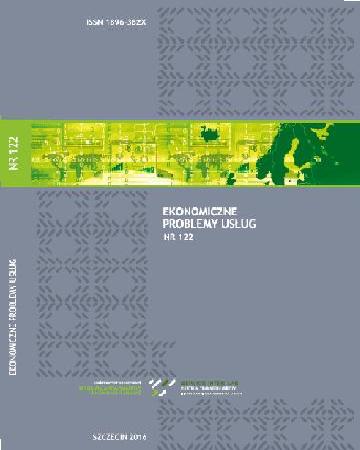
ISSN: 1896-382X
eISSN: 2353-2866
OAI
DOI: 10.18276/epu.2017.126/2-14



Issue archive /
nr 126 (2) 2017
Knowledge mobility and appropriability in the context of value co-creation
| Authors: |
Włodzimierz
Rudny
Uniwersytet Ekonomiczny w Katowicach Katedra Zarządzania Przedsiębiorstwem |
| Keywords: | knowledge mobility knowledge appropriability networks knowledge co-creation |
| Data publikacji całości: | 2017 |
| Page range: | 9 (135-143) |
| Klasyfikacja JEL: | M21 |
Abstract
Knowledge is one of the key resources in business development. Critical resources may extend beyond the enterprise's traditional boundaries, with the focal enterprise drawing upon the resources of other firms and institutions. Networks can be classified into two broad categories: market-based networks and localized learning networks. Interfirm learning in networks offers the potential to build competitive advantage. The key issues in the process of learning are: knowledge acquisition, knowledge appropriation and knowledge creation. New forms of governance have had an impact upon creative industries. Value co-creation has been greatly enhanced by the rise of the Internet and its associated interactive media forms. Using the business model approach, one can identify three different models that record labels started to implement since that time: extending value networks, bundling value propositions, and validating new resources and competencies. The purpose of the article is twofold: to identify the key problems related to knowledge mobility and transfer within business networks and to highlight the new developments in the so called value co-creation processes. The methodology applied is literature overview and case study analysis.
Download file
Article file
Bibliography
| 1. | Chauvet, V., Chollet, B., Soda, G., Huault, I. (2011). The Contribution of Network Research to Managerial Culture and Practice. European Management Journal, 29, 321-334. |
| 2. | Chiaroni, D., Chiesa, V., Frattini, F. (2011). The Open Innovation Journey: How Firms Dynami¬cally Implement the Emerging Innovation Management Paradigm. Technovation, 31, 34- 43. |
| 3. | Dhanarąj, C., Parkhe, A. (2006). Orchestrating Innovation Networks. Academy of Management Review, 31, 659-669. |
| 4. | Dominici, G., Levanti, G. (2011). The Complex System Theory for the Analysis of Inter-Firm Networks: Literature Overview and Theoretic Framework. International Business Re¬search, 4, 31-37. |
| 5. | Frenken, K. (2006). Technological Innovation and Complexity Theory. Economics of Innovation and New Technology, 15, 137-55. |
| 6. | Gronum, S., Verreynne, M.L., Kastelle, T. (2012). The Role of Networks in Small and Medium¬Sized Enterprise Innovation and Firm Performance. Journal of Small Business Manage¬ment, 50, 257-282. |
| 7. | Gulati, R. (1995). Does Familiarity Breed Trust? the Implications of Repeated Ties for Contractu¬al Choice in Alliances. Academy of Management Journal, 38, 85-112. |
| 8. | Han, M., McKelvey, B. (2008). Toward a Social Capital Theory of Technology-Based New Ven¬tures as Complex Adaptive Systems. International Journal of Accounting & Information Management, I6, 36-61. |
| 9. | Huggins, R., Thompson, P. (2015). Entrepreneurship, Innovation and Regional Growth: |
| 10. | A Network Theory. Small Business Economics, 45, 103-128. |
| 11. | Laursen, K., Salter A (2006). Open for Innovation: The Role of Openness in Explaining Innovation Performance Among U.K. Manufacturing Firms. Strategic Management Journal, 27, 131-150. |
| 12. | Leven, P., Holmstrom, J., Mathiassen, L. (2014). Managing Research and Innovation Networks: Evi-dence from a Govermnent Sponsored Cross-Industry Program. Research Policy, 43, 156-168. |
| 13. | Malhotra, A, Gosain, S., El Sawy, O. (2005). Absorptive capacity configurations in supply chains: |
| 14. | Gearing for partner-enabled market knowledge creation. MIS Quarterly, 29 (1 ), 145-187. |
| 15. | Moyon, E., Lecocq (2015). Rethinking business models in creative industries. International Stud¬ies of Management and Organization, 4, 83-1O1. |
| 16. | Pisano, G. (2006). Profiting From Innovation and the Intellectual Property Revolution. Research Policy, 35, 1122-1130. |
| 17. | Sawhney, M., Verona, G., Prandelli, E. (2005). Collaborating to create: the internet as a platform for customer engagement in product innovation. Journal of Interactive Marketing, 19 ( 4 ), 4-17. |